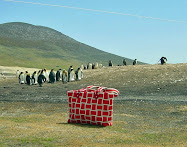The Shelter Perspective: The Liverpool Street Extension 1941
Reducing the magnificence of Henry Moore's sculptures to a 2-D photographic image doesn't work for me. You can't savour them from every angle or appreciate their overwhelming impact in the space. At the Henry Moore show at Tate Britain here his drawings have as much eloquence, particularly his iconic series of London citizens sheltering in the underground from the nightly bombing raids in the Blitz. Moore was appalled by the poverty and squalor he encountered in these claustrophic living tombs and the sight of sleeping bodies in rows he could only compare to the horror of the slave ship.
Photo: Lee Miller, Henry Moore in Holborn underground station 1943
These outdoor images, some of which I have reproduced individually below, are a master-class in the art of being an eye-witness: immediate, dramatic, full of information. I marvel at his sense of scale: monumental scenes reduced to a thumbnail. But the subject matter is sometimes quirky, surreal in the way he juxtaposes sheep, for instance, with bombers, a crashed plane lodged against a haystack or 'peaceful women' with 'sudden devastation'. I spent a long time in front of this composite and I hope they repay you for giving them your close attention.

Bombs bursting at sea

Eighteen Ideas for War Drawings 1940 Pencil, wax crayon, coloured crayon, watercolour wash and pen and ink on paper 27.4 x 37.6 cm
searchlights
flashes from ground
gun shells bursting like stars
devastated houses
bomb crater
contrast of peaceful women with sudden devastation
Haystack and aeroplane
burning cows
spotters [?] on buildings
barbed wire
Cows & Bombers


















































Never seen those before Rose. They're a far cry from the subtle eroticism of his photography.
ReplyDeleteI would never have expected such a Gothic streak in him. I guess carpet bombing wrings that out of the sunniest dispositions.
They remind me a lot of Herbert Pfostel drawings,as well as Goya's Disasters of War etchings, especially with those terse penciled captions.
rurritable, this exhibition did show a contrasting dark side to Henry Moore beyond his familiar nudes and maternal sculptures. His post-war work is particulalry ominous.
ReplyDeleteFascinating, Rose, and uncannily welcome at a time when I am re-reading Paul Scott's Jewel in The Crown wherein the Daphne Manners character notices Henry Moore's drawings of the underground, etc on the walls of that generally unsympathetic figure Ronald Merrick. "What a surprising person you are, Ronald". Of course, Capt Merrick turned out to be twisted in the extreme, didn't he?
ReplyDeleteAlways flattered by your interest in my posts Mr. Worthington and I am particularly thrilled when they chime with your bedside reading.
ReplyDeleteOf Captain Merrick: I didn't know that reference but my lasting image from the television production is him sitting lost in thought to Au Claire de la Lune on the gramophone in his starched khaki police shorts. So not all bad, clearly.
Thank you for posting these. I have long admired his war drawings. I'm especially pleased to find out that the exhibition will still be on as I pass through London this summer. I shall hasten there, and you should call and ask for your commission.
ReplyDeleteI am so glad you will get a chance to see this show. You may find me sitting on the steps of Tate Britain eating ice-cream. It's a marvellous gallery, so much more restful and accommodating than its modern cousin, exciting though that building is.
ReplyDelete